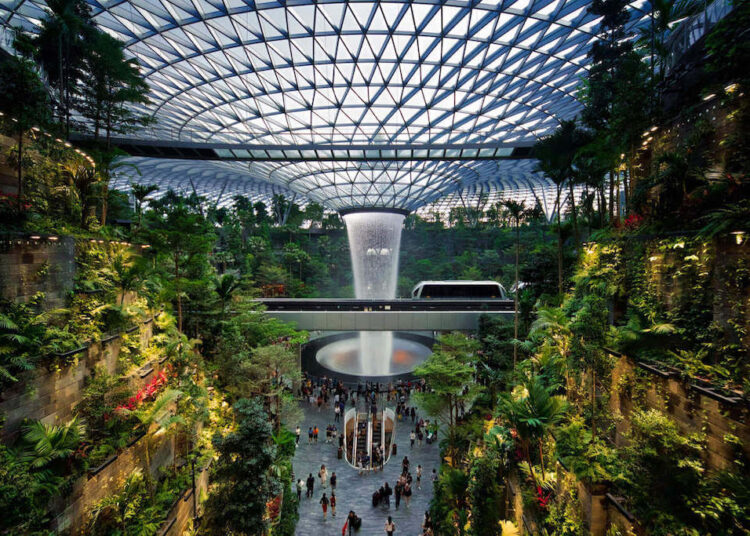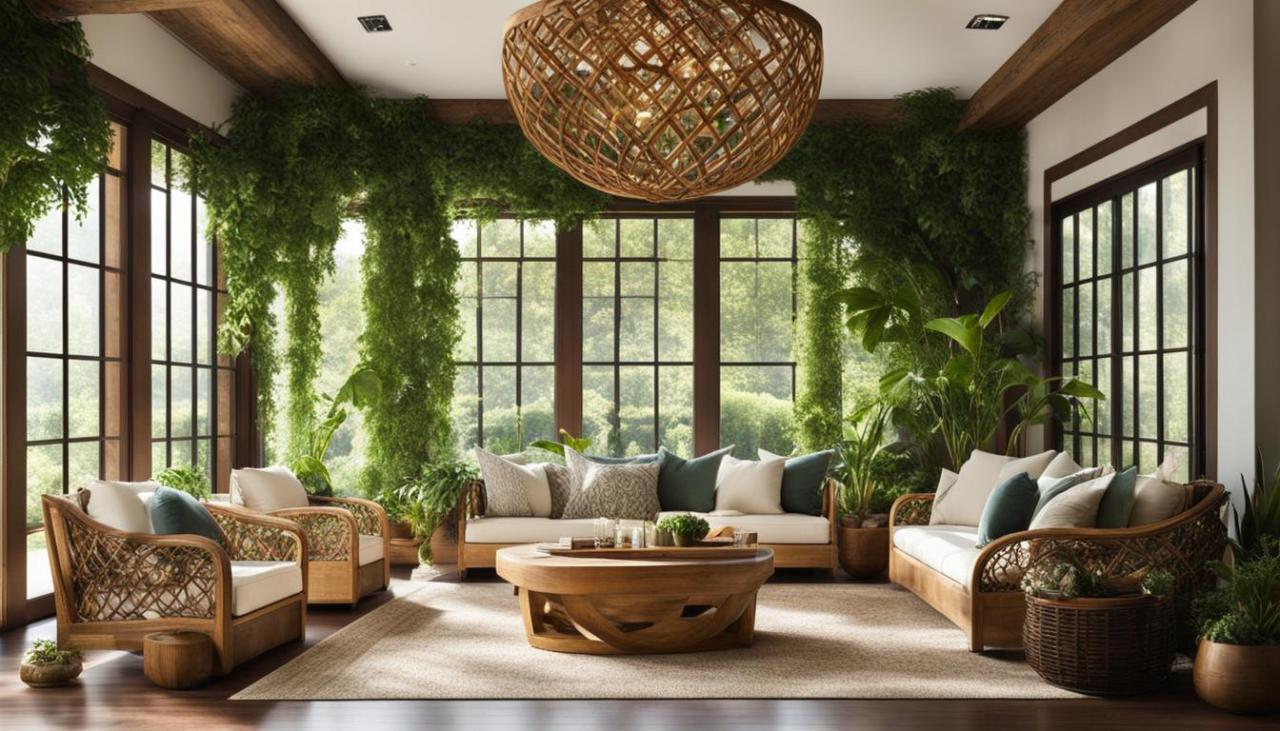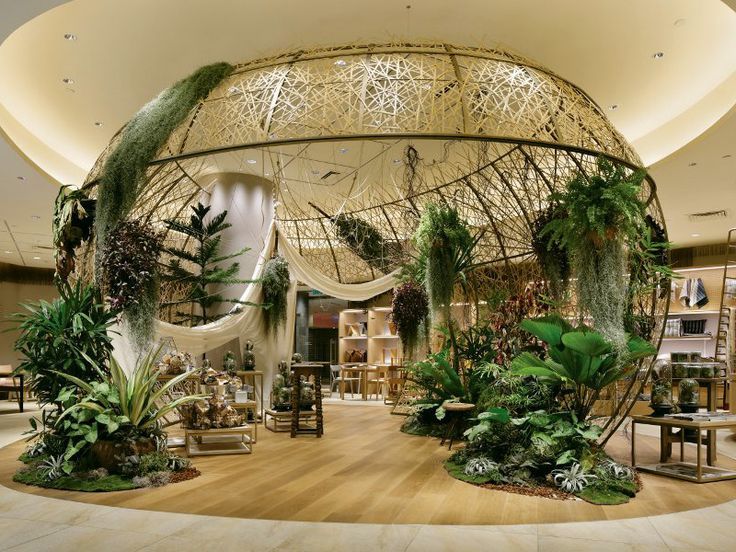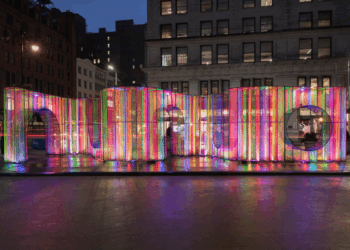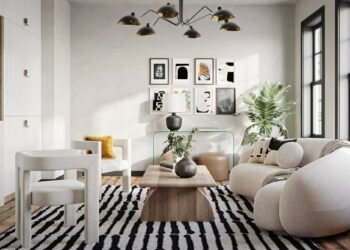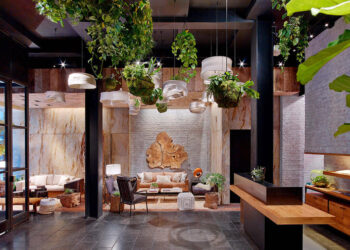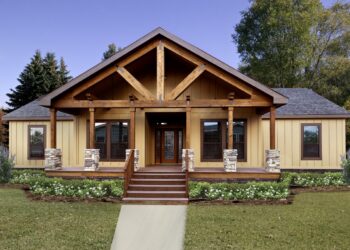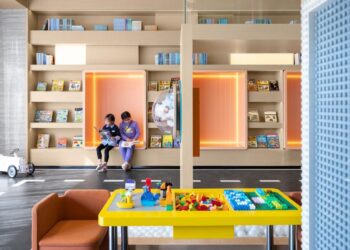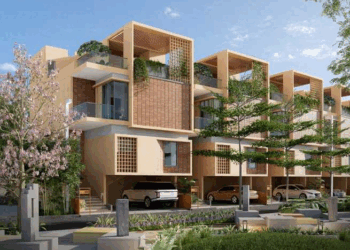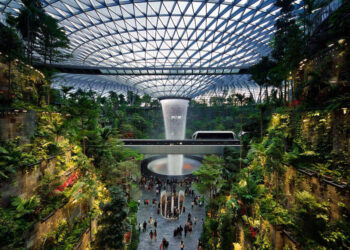The Irreducible Need for Nature
The concept of biophilia, first articulated by Erich Fromm and later popularized by E.O. Wilson, describes the inherent human tendency to affiliate with natural systems and processes. This isn’t just a romantic notion; it’s a fundamental biological imperative rooted in our evolutionary history. Ignoring this deep-seated need in our modern, predominantly indoor lives has tangible negative consequences.
A. Primal Connection: For the vast majority of human existence, our species evolved in direct, intimate contact with nature. Our brains, senses, and physiological systems are hardwired to respond positively to natural stimuli – the rustle of leaves, the sound of water, the patterns of light and shadow.
B. Sensory Deprivation: Modern urban and indoor environments often deprive us of this rich sensory experience, leading to what some call “nature deficit disorder.” This can manifest as increased stress, reduced attention spans, and overall diminished well-being.
C. Stress Reduction: Numerous studies have shown that exposure to nature, even through passive observation, lowers cortisol levels, reduces blood pressure, and promotes a sense of relaxation. Hospital patients with views of nature recover faster and require less pain medication.
D. Cognitive Enhancement: Environments rich in natural elements improve cognitive performance, attention restoration, and problem-solving abilities. They reduce mental fatigue and enhance creativity.
E. Mood and Emotional Regulation: Spending time in nature, or being surrounded by natural elements, significantly boosts mood, reduces feelings of anxiety and depression, and fosters positive emotions.
F. Physical Health Benefits: Beyond mental health, nature exposure can strengthen the immune system, improve sleep quality (by regulating circadian rhythms through natural light exposure), and encourage physical activity.
Core Principles of Biophilic Design
Biophilic design is a sophisticated framework, not a simple checklist. It encompasses various patterns and strategies that integrate nature in both direct and indirect ways.
A. Direct Connection to Nature
These patterns involve a tangible, immediate experience of natural elements.
A. Natural Light and Airflow:
A. Daylight Maximization: Designing spaces with ample windows, skylights, and open floor plans to allow maximum penetration of natural light. This reduces the need for artificial lighting, saves energy, and regulates circadian rhythms.
B. Views to Nature: Strategically positioning furniture and designing layouts to offer unobstructed views of natural elements outside – whether it’s a park, a distant tree, a garden, or even dynamic cloud formations. The more complex and diverse the natural view, the more restorative it tends to be.
C. Operable Windows and Natural Ventilation: Providing the ability to open windows for fresh air circulation, allowing occupants to experience natural breezes, sounds, and scents, fostering a stronger connection to the outdoor environment. This also reduces reliance on mechanical HVAC systems.
D. Air Quality and Purity: Beyond just ventilation, actively integrating systems that filter and purify indoor air, as well as choosing materials that don’t off-gas harmful volatile organic compounds (VOCs).
B. Living Systems and Vegetation:
A. Indoor Plants: Incorporating a variety of indoor plants, from small desk plants to large specimen trees and potted arrangements. Plants improve air quality, absorb CO2, regulate humidity, and provide visual and psychological comfort.
B. Living Walls (Vertical Gardens): Large, vegetated panels covering entire walls. These are stunning visual features, excellent for air purification, acoustic dampening, and provide a dense, immersive connection to greenery, especially valuable in limited spaces.
C. Interior Gardens/Atriums: Designing open-air or glass-enclosed interior courtyards, atriums, or sunrooms that bring significant natural landscapes directly into the building, serving as communal oases.
D. Water Features: Integrating indoor fountains, aquariums, reflection pools, or cascades. The sight and sound of moving water are profoundly calming, masking unwanted noise and providing visual interest.
C. Weather and Seasonality:
A. Dynamic and Diffused Light: Allowing for the subtle changes in light intensity, color, and shadows throughout the day and with different weather conditions. This mimics the natural variability of outdoor light and supports circadian rhythms.
B. Temperature Variation: Designing systems that allow for slight, comfortable fluctuations in indoor temperature, mirroring natural outdoor conditions, which can enhance alertness and comfort.
C. Natural Sounds: Incorporating subtle sounds of nature (rain, gentle wind, birdsong) either directly through open windows or via sound systems designed to mask unwanted urban noise with natural acoustics.
B. Indirect Connection to Nature
These patterns evoke nature through natural forms, materials, patterns, and sensory cues, even without direct living elements.
A. Natural Forms and Shapes:
A. Organic Shapes: Using furniture, architectural elements, and decor that feature curvilinear lines, organic forms, and shapes found in nature (e.g., curves of a river, spirals of a shell, shapes of leaves), avoiding rigid, rectilinear designs.
B. Biomorphic Patterns: Integrating patterns in textiles, wallpapers, or architectural details that resemble natural structures or textures, such as fractals found in ferns, patterns of a honeycomb, or wood grain.
B. Natural Materials and Textures:
A. Authentic Materials: Prioritizing materials like real wood, stone, cork, bamboo, natural fibers (linen, wool, cotton), and concrete for their inherent textures, warmth, and connection to the earth. These materials tell a story through their imperfections and patina.
B. Tactile Richness: Offering a variety of textures in a space that invite touch and add sensory depth (e.g., rough stone alongside smooth polished wood).
C. Color Palettes from Nature:
A. Earthy Tones: Using colors derived directly from natural landscapes – greens, blues, browns, greys, and warm neutrals. These hues create a calming and harmonious backdrop.
B. Subtle Variations: Employing different shades and tints of natural colors to create depth and visual interest without overwhelming the senses.
D. Prospect and Refuge:
A. Prospect: Designing spaces that offer clear, expansive views across an area, providing a sense of openness and allowing individuals to survey their surroundings, mimicking a safe vantage point in nature.
B. Refuge: Creating smaller, more enclosed, or semi-enclosed spaces within a larger area where individuals can retreat for privacy, deep focus, or quiet contemplation, offering a sense of safety and respite.
Profound Benefits of Biophilic Office Design
Investing in biophilic design isn’t just about making spaces look green; it’s about unlocking a multitude of measurable benefits for occupants and the organization alike.
A. Enhanced Health and Well-being
A. Stress Reduction: Direct and indirect exposure to nature significantly lowers physiological stress indicators, such as heart rate and blood pressure, and reduces cortisol levels. This leads to a more relaxed and resilient state.
B. Improved Mood and Reduced Fatigue: Access to natural light and views, coupled with the presence of greenery, contributes to a more positive emotional outlook, combating feelings of sluggishness and boosting overall vitality.
C. Better Indoor Air Quality: Live plants actively absorb volatile organic compounds (VOCs) and carbon dioxide, while releasing oxygen, dramatically improving indoor air quality and mitigating “sick building syndrome.” Proper ventilation complements this.
B. Increased Productivity and Cognitive Performance
A. Enhanced Concentration and Focus: Natural elements, by reducing mental fatigue and providing restorative “micro-breaks” for the brain, allow for sustained attention and deeper concentration on tasks.
B. Boosted Creativity: Nature-inspired environments are consistently linked to divergent thinking, novel idea generation, and enhanced problem-solving abilities. The richness of natural stimuli stimulates the mind in beneficial ways.
C. Improved Memory Retention: Exposure to natural environments has been shown to improve working memory and cognitive flexibility.
C. Stronger Employee Engagement and Retention / Enhanced Living Experience
A. Higher Job Satisfaction (Offices): Employees report greater satisfaction and feeling more valued in biophilically designed workplaces, leading to increased morale and loyalty.
B. Attraction of Top Talent (Offices): In a competitive job market, an organization’s commitment to employee well-being through biophilic design is a powerful differentiator for recruiting and retaining skilled professionals.
C. Enhanced Connection to Place (Homes & Offices): Biophilic design fosters a deeper emotional connection to a space, making homes feel more comforting and offices more engaging, reducing the desire to leave.
D. Improved Social Interaction: Common areas designed with biophilic principles (e.g., indoor gardens, natural light-filled lounges) can become inviting spaces for informal interactions and community building.
E. Positive Brand Image: Companies embracing biophilic design enhance their reputation as innovative, sustainable, and employee-centric, appealing to clients, partners, and the public.
D. Environmental and Economic Advantages
A. Reduced Energy Consumption: Maximizing natural light (daylighting) and enabling natural ventilation significantly lowers energy bills associated with artificial lighting, heating, and cooling.
B. Lower Operational Costs: Healthier employees mean reduced healthcare claims and fewer lost workdays, translating to direct cost savings.
C. Increased Property Value: Buildings and homes incorporating advanced green and biophilic design elements often command higher rental rates and sale prices, offering a strong return on investment.
D. Sustainable Material Use: Biophilic design often naturally leads to the selection of low-impact, natural, and sustainably sourced materials, contributing to reduced waste and a smaller carbon footprint.
Practical Steps to Bring Nature’s Touch Indoors
Implementing biophilic design doesn’t always require a complete renovation. Many interventions, both large and small, can significantly enhance a space.
A. Assessing Your Space
A. Identify Opportunities: Look for natural light sources, potential views, and areas that feel disconnected from nature.
B. Analyze Current Issues: Pinpoint problems like poor air quality, excessive noise, or lack of visual interest.
C. Consider Climate: Understand how local climate affects natural light, ventilation, and plant choices.
B. Strategic Interventions (Ranked by Impact/Ease)
A. Maximize Natural Light:
A. Clear Windows: Keep windows clean and free from obstructions (furniture, heavy drapes).
B. Light-Reflecting Surfaces: Use light-colored paints on walls and ceilings to bounce light deeper into the room.
C. Sheer Curtains/Blinds: Allow light in while providing privacy and glare control.
D. Relocate Workstations: If possible, place desks near windows to maximize daylight exposure.
B. Introduce Living Plants:
A. Start Small: Begin with low-maintenance plants like snake plants, ZZ plants, or Pothos.
B. Vary Size and Type: Mix large floor plants with smaller desk plants and hanging plants for visual interest.
C. Consider Living Walls: For a dramatic impact in a limited footprint, a living wall or a moss wall (low maintenance) can transform a space.
D. Plant Care Plan: Ensure plants receive adequate light and water. Consider professional plant maintenance services for larger installations.
C. Incorporate Natural Materials:
A. Wood Accents: Use wooden furniture, decorative objects, or even a wood feature wall.
B. Natural Textiles: Choose rugs, curtains, and upholstery made from linen, cotton, wool, or jute.
C. Stone Elements: Introduce stone through decorative bowls, planters, or small sculptures.
D. Manage Sound:
A. Soft Furnishings: Use thick rugs, heavy curtains, and upholstered furniture to absorb sound and reduce echoes.
B. White Noise/Nature Sound Machines: Use these to mask disruptive urban noise, particularly in bedrooms or quiet zones.
C. Acoustic Panels: For larger or noisier spaces, integrate art-covered acoustic panels that blend with the decor.
E. Add Water Elements (Subtle):
A. Small Indoor Fountain: A tabletop or small freestanding fountain provides soothing sounds and visual appeal.
B. Aquarium: A well-maintained aquarium can be a captivating focal point, bringing living elements and calming motion.
F. Embrace Organic Forms and Art:
A. Curved Furniture: Opt for furniture with soft curves and rounded edges.
B. Nature-Inspired Art: Display artwork (paintings, photographs, sculptures) that depict landscapes, flora, or abstract natural patterns.
G. Optimize Air Quality:
A. Indoor Air Purifiers: Use standalone air purifiers with HEPA and activated carbon filters.
B. Regular Ventilation: Open windows and doors when external air quality is good, or use mechanical ventilation systems with proper filtration.
C. Non-Toxic Products: Choose low-VOC paints, glues, and cleaning products.
Challenges and Future Outlook of Biophilic Design
While the benefits are clear, implementing biophilic design effectively presents certain considerations, and the field continues to evolve.
A. Common Challenges
A. Initial Investment: High-quality natural materials, living walls, and sophisticated lighting systems can have a higher upfront cost compared to conventional designs. However, the long-term ROI in well-being and productivity often justifies this.
B. Maintenance and Upkeep: Live plants and water features require ongoing care (watering, pruning, cleaning, pest control), which necessitates dedicated resources or professional services.
C. Space Constraints: In dense urban environments, maximizing natural light and views can be challenging for interior office spaces or apartments without direct window access, requiring creative solutions.
D. Allergies and Pests: Careful selection of plant species is crucial to avoid triggering allergies. Proper maintenance is also necessary to prevent pest infestations.
E. Perception of “Greenwashing”: The overuse of the term “biophilic” can sometimes lead to superficial applications without genuine integration, diluting the concept. Authentic design requires deep understanding.
F. Resistance to Change: Some individuals or organizations may be resistant to new design philosophies, preferring traditional aesthetics or fearing the perceived complexity.
G. Integrating with Existing Structures: Retrofitting biophilic elements into older buildings can be complex due to structural limitations or existing infrastructure.
B. The Future of Nature-Integrated Design
The trajectory of biophilic design points towards even more sophisticated, technology-integrated, and pervasive applications, moving beyond mere aesthetics to truly living, breathing environments.
A. Adaptive Biophilic Systems:
A. Smart Living Walls: Integrated sensors that monitor plant health, soil moisture, and light levels, automatically adjusting irrigation and supplemental lighting.
B. Dynamic Lightscapes: AI-powered lighting systems that autonomously adjust color temperature, intensity, and even projected patterns (e.g., dappled light mimicking tree canopy) throughout the day to optimize circadian rhythms and mood based on occupancy and external conditions.
C. Personalized Climates: Micro-climates within larger spaces, where individual zones can be subtly adjusted for temperature, humidity, and airflow to optimize comfort and alertness, potentially informed by wearable tech.
B. Regenerative Biophilic Design:
A. Carbon-Sequestrating Buildings: Buildings designed not just to reduce emissions but to actively remove carbon from the atmosphere through bio-integrated materials (e.g., mass timber, bio-concrete) and living systems.
B. Water-Positive Structures: Buildings that collect, purify, and reuse more water than they consume, contributing positively to local water cycles.
C. Biodiversity Accelerators: Buildings and their surrounding landscapes designed to actively support and increase local biodiversity, creating urban oases for flora and fauna.
C. Immersive and Augmented Nature Experiences:
A. Biometric Feedback Environments: Spaces that respond to occupants’ physiological states (e.g., stress levels, heart rate) by subtly adjusting environmental parameters (e.g., calming sounds, soft lighting, relaxing scents) to promote well-being.
B. Augmented Reality Nature: AR overlays that transform physical spaces with virtual natural elements, offering dynamic views or immersive landscapes in areas where real nature is impossible.
C. Digital Biophilic Art: Large-scale digital installations that display evolving, realistic natural scenes with synchronized sounds, providing dynamic and restorative experiences.
D. Integrated Urban Ecosystems:
A. Building-as-Ecosystem: Future buildings will be designed as integral parts of urban ecosystems, contributing to stormwater management, air purification, and urban food production (e.g., rooftop farms, vertical agriculture integrated into facades).
B. Community Biophilic Hubs: Shared urban spaces (e.g., transit hubs, community centers) incorporating extensive biophilic elements, making nature accessible to all city dwellers.
Conclusion
The enduring power of nature’s touch indoors lies in its ability to address our deepest human needs in an increasingly artificial world. Biophilic design is more than a fleeting trend; it is a vital, evidence-based approach that creates healthier, happier, and more productive spaces. By consciously integrating the wisdom and beauty of the natural world into our homes and offices, we are not just improving our immediate surroundings, but fundamentally reconnecting with ourselves and fostering a more sustainable, thriving future for all. This profound paradigm shift reminds us that ultimately, our well-being is inextricably linked to the well-being of the planet we inhabit.

